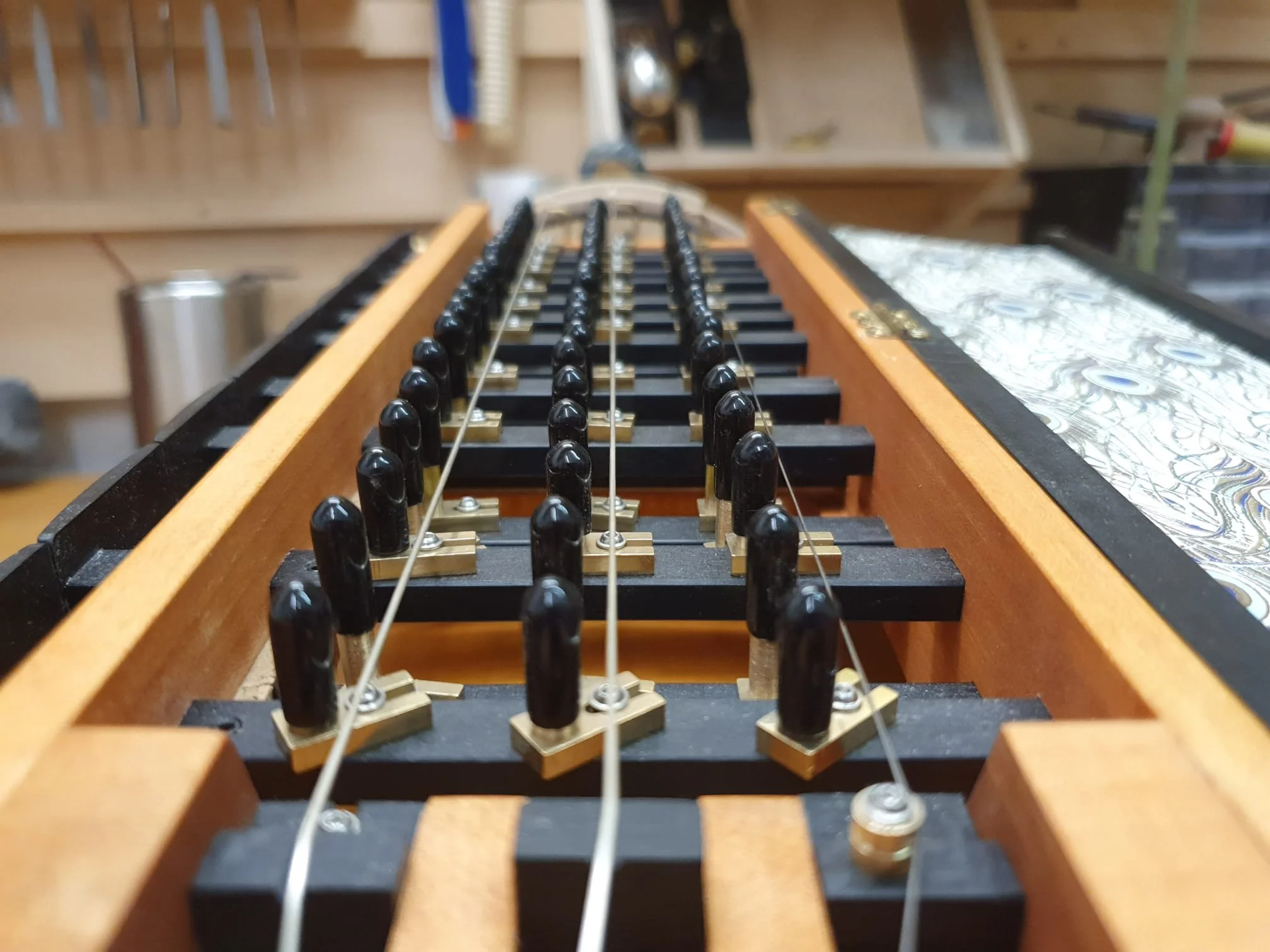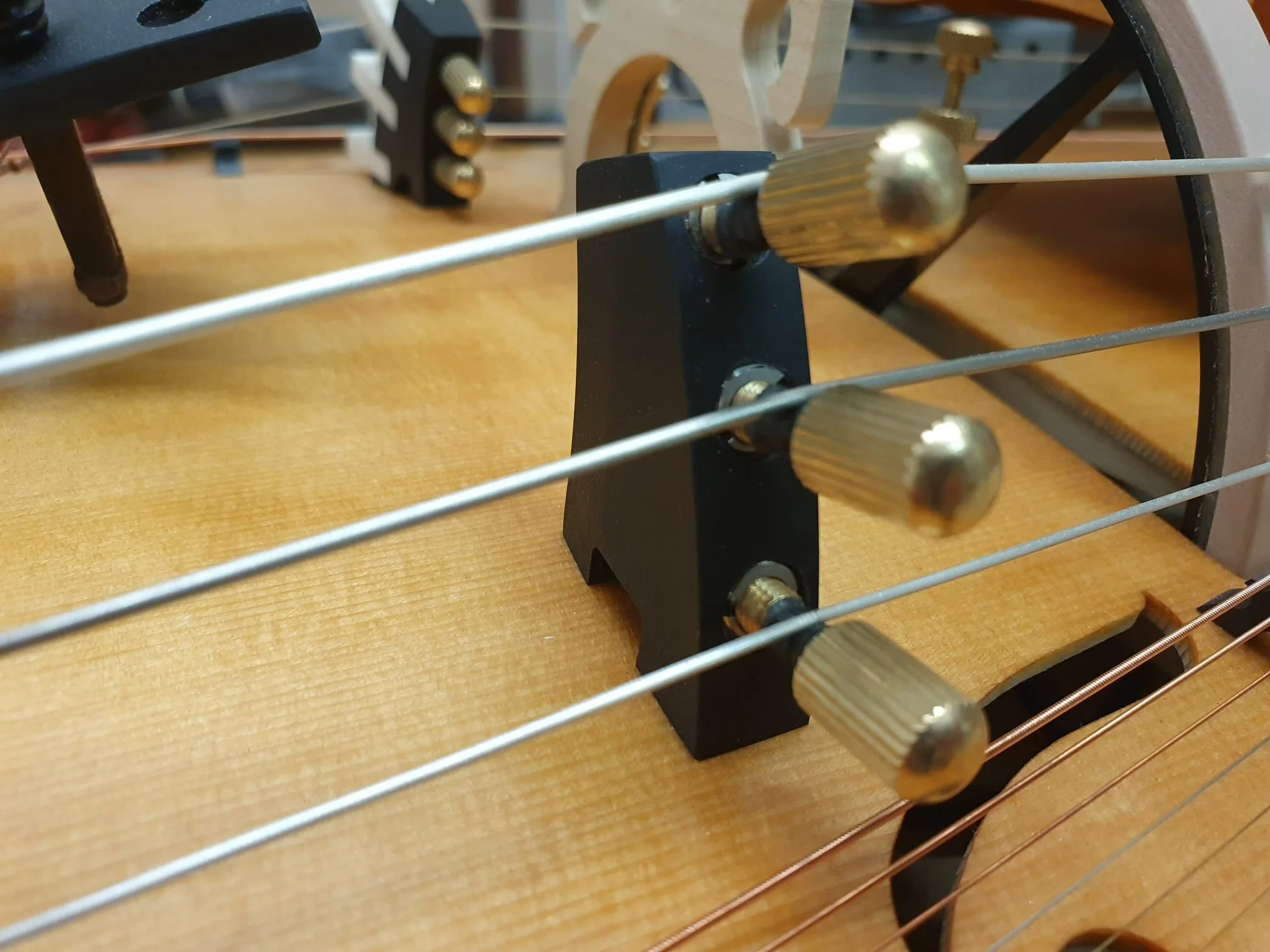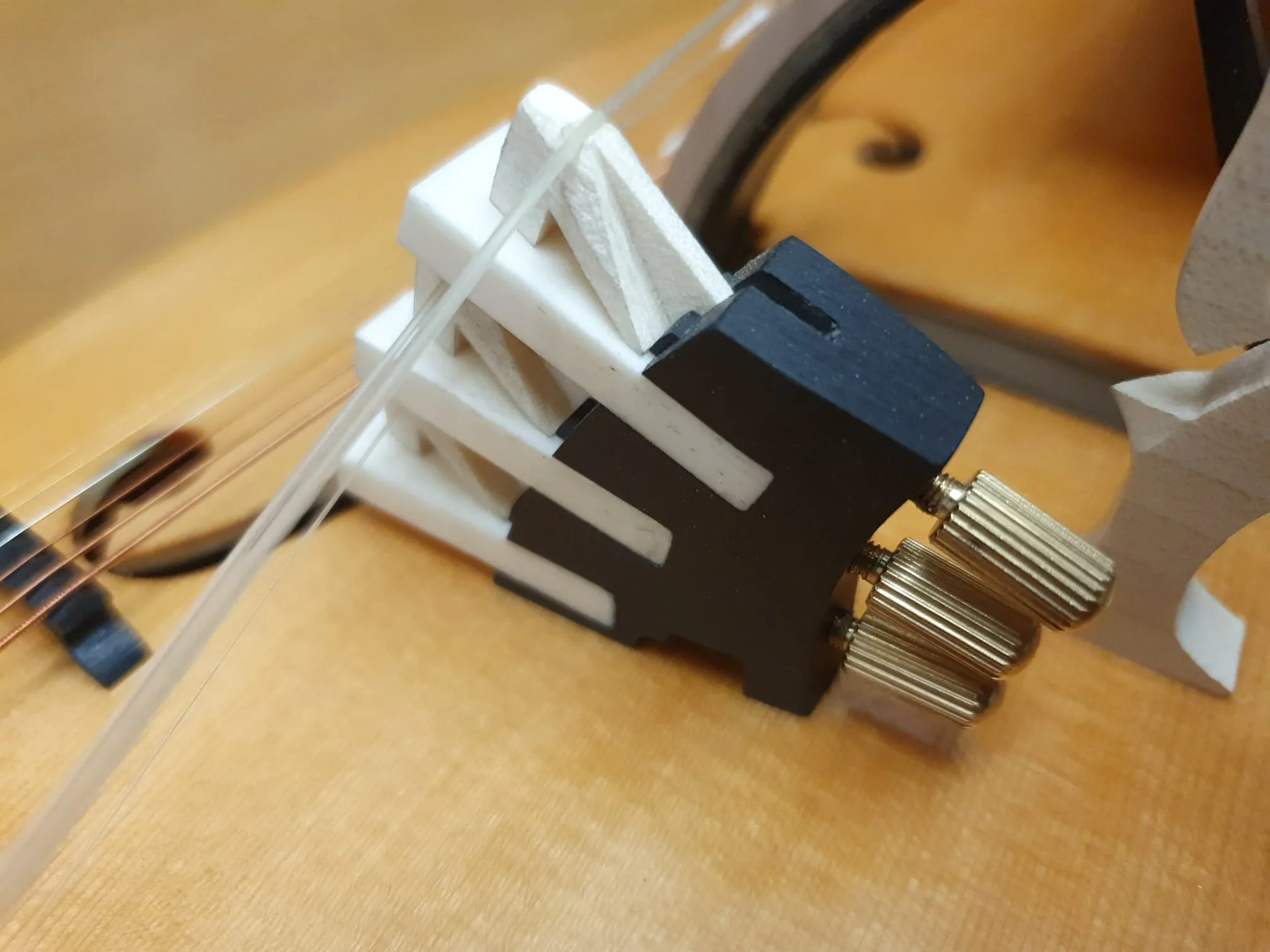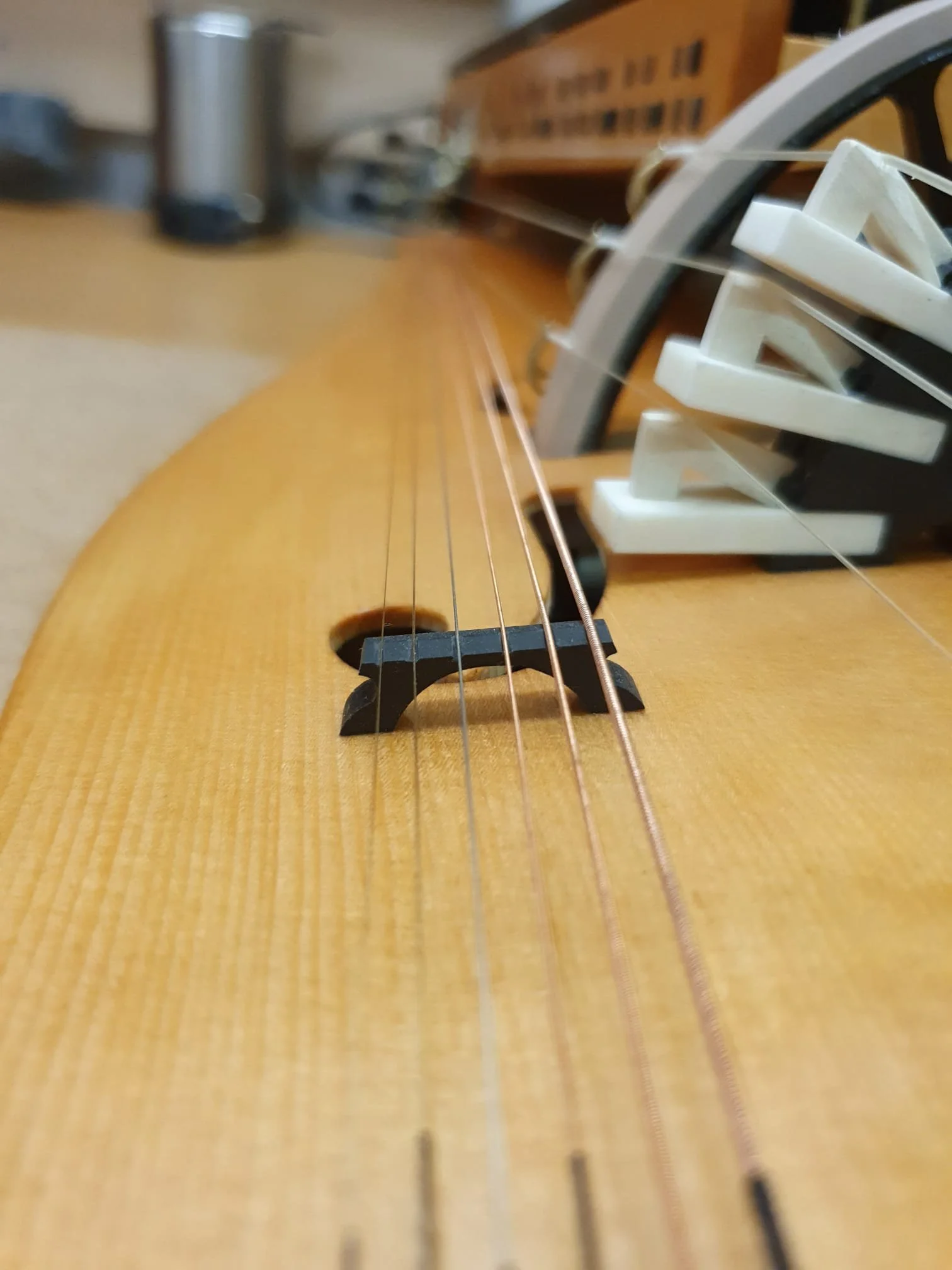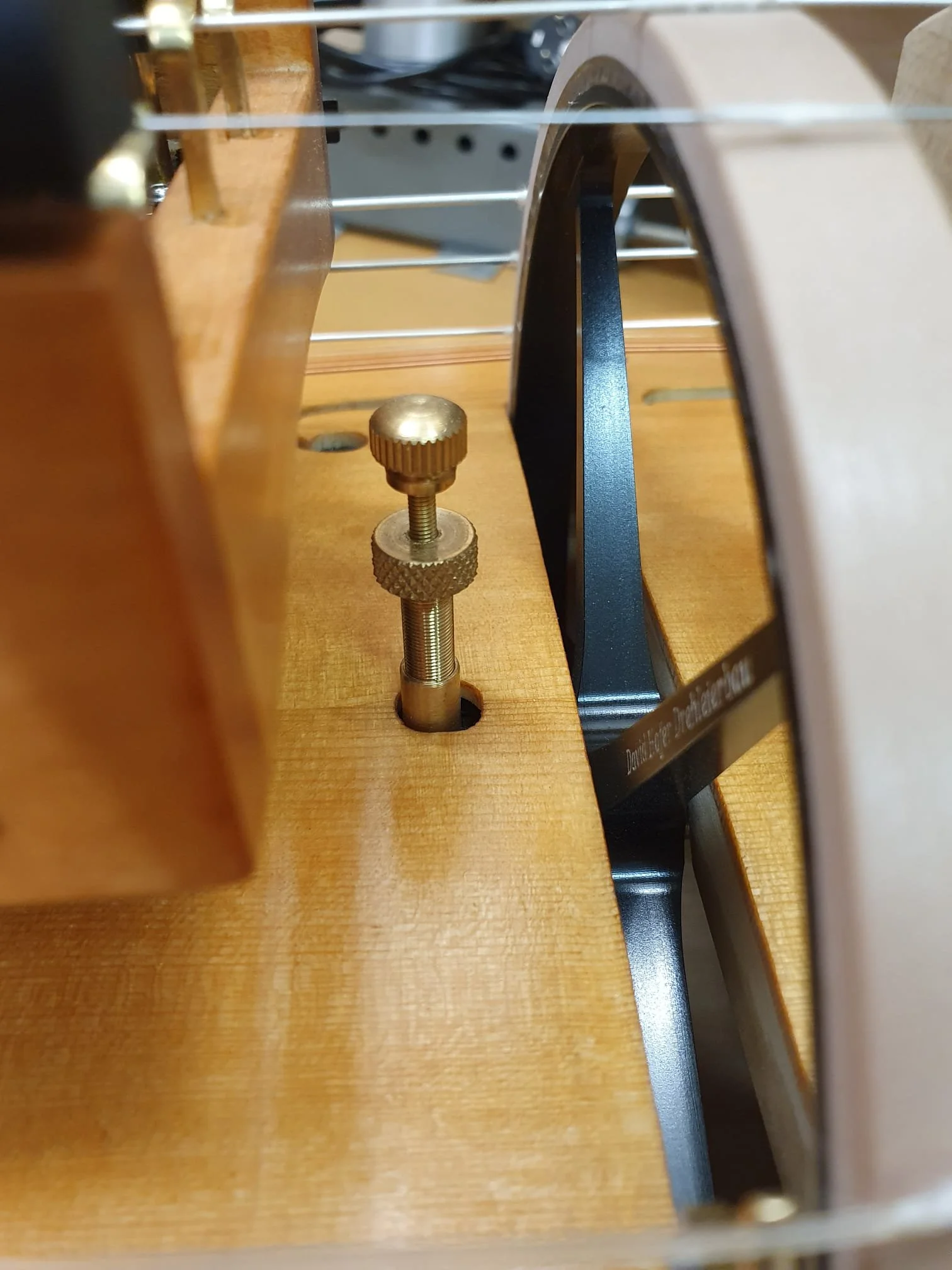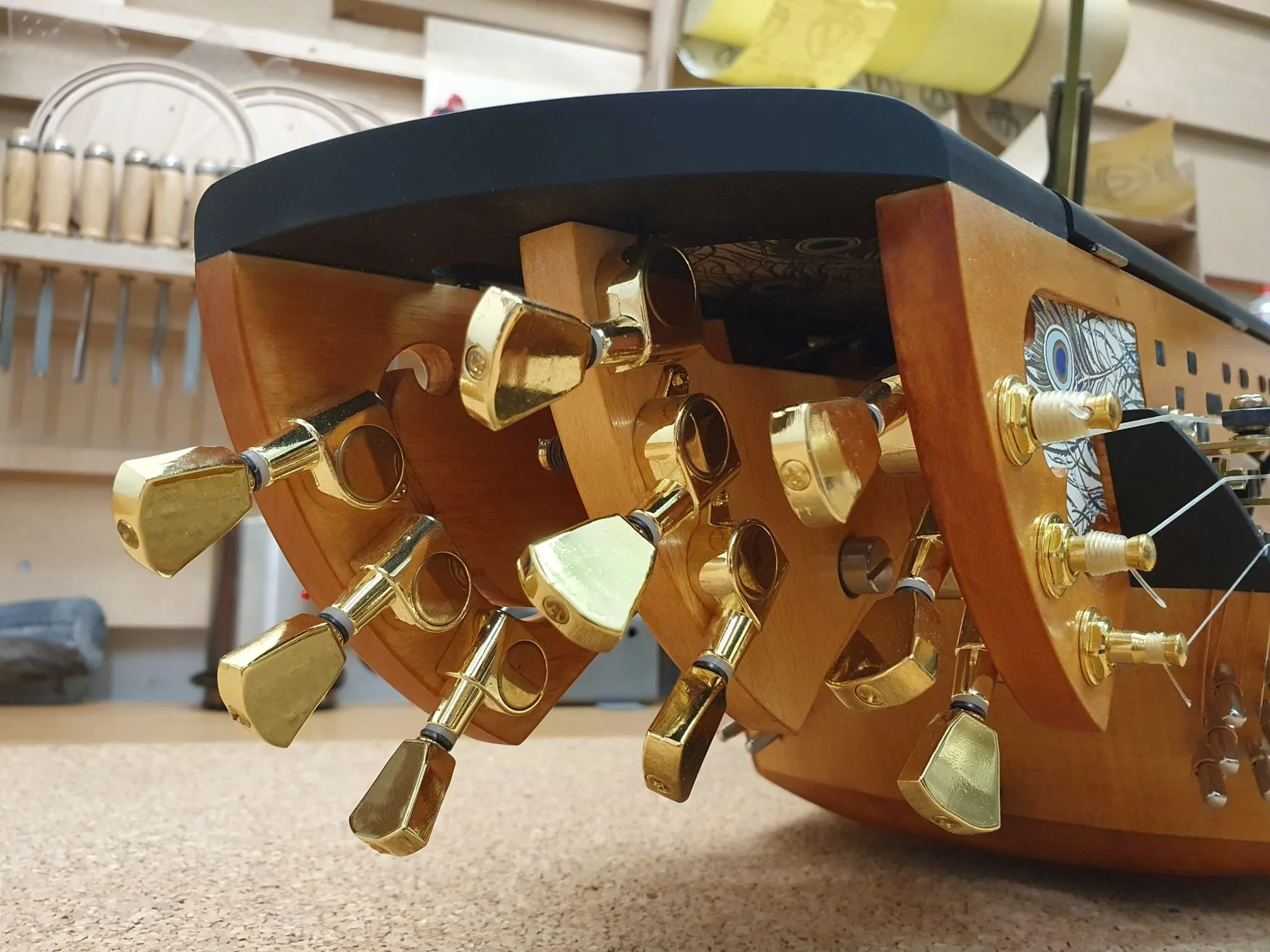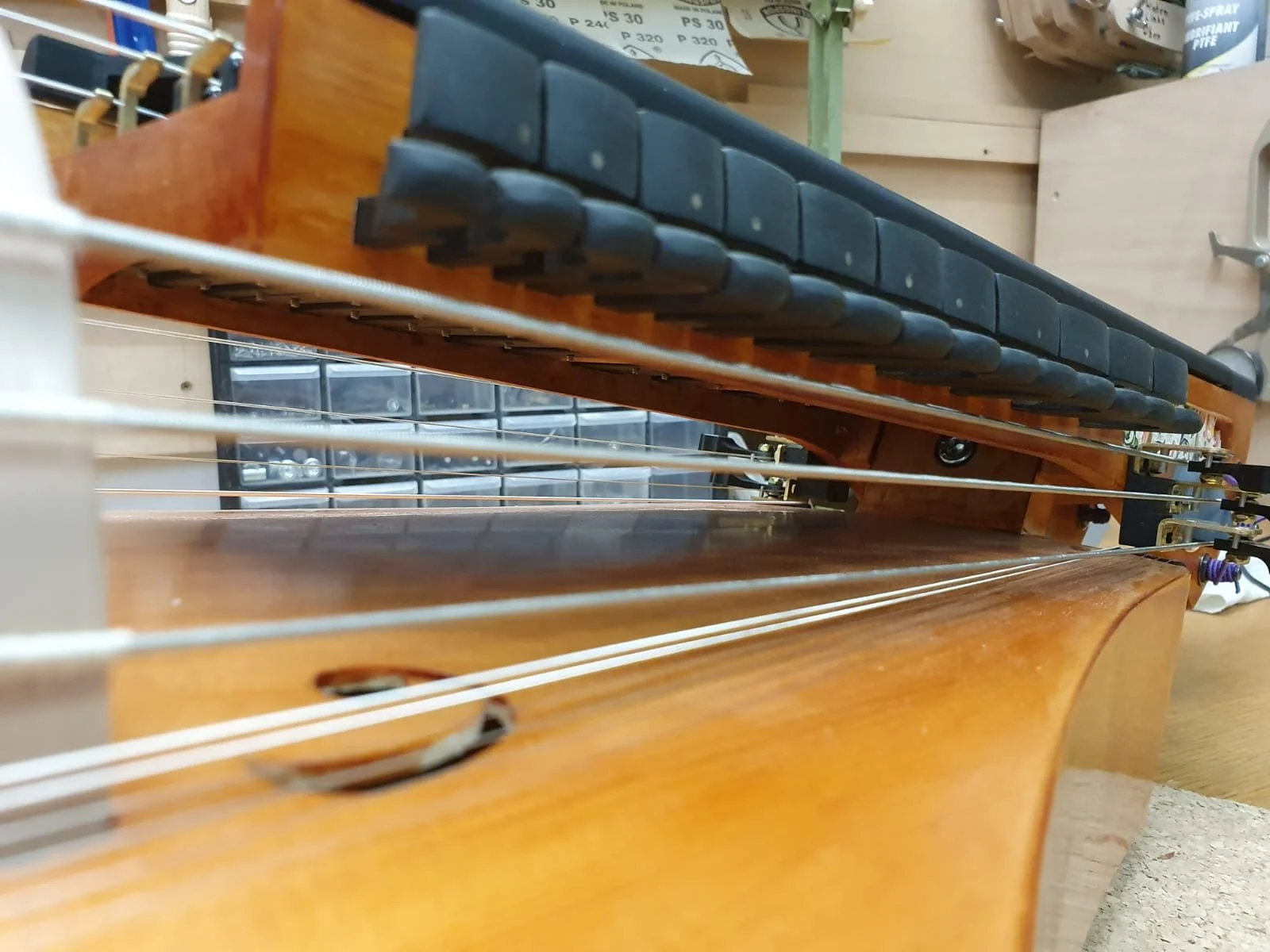
The linchpin of everything.
Six years (and counting) of development and many iterations were necessary to create this Hurdy-Gurdy.
The ALTO model is characterized by a profound, balanced and modern sound with enormous projection power.
Melody Strings
With a scale length of 370mm -which corresponds to the standard of a viola- means that a large selection of brands are available. This offers a lot of individualization to find your own sound.
Keys
The register of the ALTO is built with 26 fully chromatic keys in G layout. (Over two octaves)
Intonation
In order to achieve optimum intonation, metal tangents are used and the bridge and nut is not glued.
String Pressure
This is not adjusted as usual via two knurled screws in the bridge or shimming up, but via the dynamic wheel bearing (DynRaL).
I use viola strings with the following tuning as standard:
drone side: 4/4 c medium tension
middle: 4/4 g medium tension
trumpet side: 4/4 a1 medium or high tension, tuned down to g1
Drone Strings
The drone strings correspond to the scale length of a 1/8 cello. This also gives you a greater selection of brands to choose from to personalize the timbre.
String Pressure
Knurled screws with two grooves allow the pressure to be optimally adjusted to the wheel and the string to be unhooked.
Capo
Capos can be fitted to each drone string on the ALTO.
I use cello strings with the following tuning as standard:
top: 1/8 C medium tension
middle: 1/2 C medium tension, tuned to an E
bottom: 1/8 G medium tension
Trumpet Strings
The ALTO's dogs have a crisp sound with a precise response, but do not try to drown out the instrument.
String Pressure
The string pressure of each dog can be individually adjusted thanks to a knurled screw.
String Rest
Unlike most Hurdy-Gurdies, the string hanger is not glued to the soundboard as usual, but to the rib of the DynRaL. This frees the soundboard from unnecessary mass.
Capo
Capos can be fitted to each trumpet string.
I use gut strings with the following tuning as standard:
top: g ~ 196Hz
middle: c ~ 261Hz
bottom: e ~ 329Hz
Resonance Strings
The sound is complemented by 12 resonance strings.
I use the following tuning as standard:
A, d, a, d1, a1, d2
G, c, g, c1, g1, c2
Dynamic Wheel Bearing
The dynamic wheel bearing (DynRaL from german: Dynamisches Radlager) developed by me is a unique feature. The function can be divided into three components:
- Adjusting the Melody String Pressure (lower Thumb-Screw)
Usually the pressure is regulated by adjusting screws in the legs or by paper shims in the notches.
How to: Turning the lower Thumb-Screw clockwise decrease the string pressure, and visa versa.
- Dynamic Playing
The side effect of this string pressure system enables a dynamic playing style.
(also known from other manufacturers)
How to: By skillful handling of the knob, it is possible to release the wheel from the melody strings while
playing in any crank position.
- Switching the Dynamic Playing on/off (upper Thumb-Screw)
As an additional function, set the amount of force as desired to play dynamically and even deactivate it without interupting the string pressure function.
How to: Turning the upper Thumb-Screw counter-clockwise increase the force.
Pegbox
The ALTO's peg box - which I have named Jaw :D- goes its own way and thus swims against the mainstream. No out-of-place foreign body, but a design integrated into the elegant shape.
Floating Tangentbox
To allow the sound to unfold optimally, I have completely detached the tangent box from the Soundboard. This also contributes to the incorruptible design of the ALTO and remains stable despite everything.
In addition, the Tangentbox is adjustable in height and sideways.
A clever design desicion makes it even possible to change the Tangenbox without opening any glue joints!



